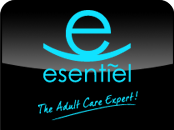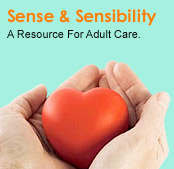 |
 |
 |
 |
|
|||||||||||||||||||||
 |
|
Managing eczema ECZEMA is a general term to describe various inflamed skin conditions, one of the most common forms being atopic dermatitis (or atopic eczema). You can understand why the ancient Greeks called it eczema, meaning "to boil out." Atopy implies the inherited tendency to a certain response to allergens in the production of a protein called IgE (immunoglobin E). Many of those who suffer from eczema may also be affected by allergic rhinitis and asthma. Some switch from one condition to the other at different points in time. Atopic eczema affects all races and ages. More and more children are getting the condition, and have their first episode before 5 years of age, the disease having a less serious effect as they grow older. But for the unlucky ones, it becomes a chronic, recurrent disorder. Eczema is sometimes referred to as "the itch that rashes." There is intense itching, and a red and bumpy rash appears later. The bumps may be filled with fluid and if scratched they may ooze and become crusty. Unrestrained scratching may produce thickened, leathery skin and subsequently painful cracks may develop. In babies the rash usually appears on the face and body, and on the knees and elbows when he is in the crawling stage. In adults the rash may be on the neck, hands and feet, and in between the elbows and the knees. According to a dermatologist, there is a rising incidence of eczema worldwide. Very often none have a positive family history. Prolonging breastfeeding lessens the incidence, he says. Atopic eczema accounts for 70 per cent of cases present before three years of age, with most below five years. Among the very young it is obvious from a bad cradle cap. A child scratching and suffering affects not only him but the parents too who try to look for all kinds of treatment. It's a chronic inflammatory skin disease. The severe itch may result in the child tearing away at the skin and risking infection. Triggers in atopic dermatitis include: soaps and detergents, solvents, rough wool clothing, synthetic fibres, perfumes, extremes of weather, food, stress, pet dander, hormonal changes, repeated washing and drying of skin, among others. The skin disease can also be triggered off by environmental factors. Dust mites, pollen, animal hair and mould may worsen the condition, as may cigarette smoke. You have to maintain a non-allergenic environment by taking things out and dusting in the sun. Avoidance of irritants and maintaining skin hydration with the use of emollients will be beneficial. You have to use a lot of moisturizing agents. Some even wrap up the inflamed parts with wet gauze to prevent scratching. There are pharmacological therapies to resort to such as topical corticosteroids and topical calcinum inhibitors but there are problems and complications with steroid treatment. There is thinning of the skin in the child, which tears easily. Although there are new treatments, the old traditional ones still hold, such as the use of lots of emollients and lessening exposure to irritants. Ultra-violet light therapy may help too. If the child is in a bad condition, oral steroids would have to be administered. Using mild steroids, with supervision, is very safe in children, said the dermatologist. After the age of five or six, the child's degree of eczema is gradually reduced and by 14 or 15, many do not have a major problem with it. But if it still persists in adulthood, it boils down to management of the condition by watching out for the triggers. Dietary changes may help in babies and young children, who may have allergies to certain foods. In clinical trials in the UK, evening primrose oil in high doses have shown improvement in children suffering from eczema, when taken with Zinc, Vitamin B6 and Vitamin C. The benefits of probiotics in eczema is a growing field of interest. Studies on children born to mothers with allergies in the US and Sweden have revealed that allergic manifestations in children can be reduced by 50 per cent with the taking of probiotics.
|
|||||||||||||||
Back to top! |
|||||||||||||||